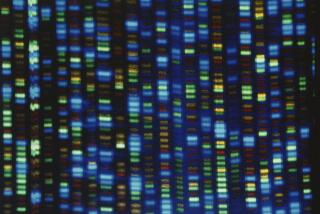India Gene Bank to Save Ancient Cures
NEW DELHI — What India’s villagers and Sanskrit scholars have known for centuries--that the bark of the babbula tree is good for tonsillitis and the nagakesara flower works wonders on hemorrhoids--is now being scrutinized by environmental scientists.
The babbula and the nagakesara are among thousands of India’s medicinal and aromatic plants and trees that form the base of the country’s ancient Ayurvedic system of medicine, and which now are on the front line of the biodiversity battle.
The tissue of these medicinal plants will soon be stored in liquid nitrogen in a gene bank, a landmark cooperative project among developing countries to save their eroding genetic resources.
India last year was assigned to develop gene banks for Asia by the Group of 15 (G-15) developing countries. Egypt will coordinate banks for the African countries and Brazil will do the same for Latin America.
“Today the world is losing four important species per hour,” said Manju Sharma, an adviser in India’s Department of Biotechnology and the regional coordinator for the gene bank.
“If this rate continues, in the next 10 years half the genetic resources in the world will have disappeared,” Sharma said at her New Delhi home.
Sharma, a soft-spoken botanist and plant physiologist, has been a chief architect of India’s program to set aside land to preserve genetic diversity within vulnerable ecosystems.
India has 45,000 plant species and 30% of them are found nowhere else. Sharma said India’s rich biological resources and its existing genetic research facilities were the main reasons it was chosen to coordinate the creation of the gene banks in Asia.
Medicinal plants such as the babbula are particularly important because 90% of the rural population in G-15 countries use such plants for home remedies.
But they are easily exploited.
Dioscorea--a primary source of genetic material used in oral contraceptives throughout the world--has virtually disappeared from India because people ate the tuberous plant without realizing its value and others sold it to pharmaceutical companies at throw-away prices, Sharma said.
“Biodiversity is really long-term security for the poor,” she said.
This view--that the poor in developing countries depend on biodiversity for their livelihood and that there needs to be a legal means to protect it--was behind the biodiversity treaty at the Rio Earth Summit in Brazil in June.
The treaty signed by 150 countries--but notably not the United States--aims to protect endangered species. It says that poor countries should be given a share in profits earned by products derived from their flora and fauna.
Environmentalists argue that advances in biotechnology threaten to erode genetic diversity, for instance, by emphasizing engineered plants whose seeds can be patented by companies.
Environmentalists say the main reason the United States did not sign the biodiversity treaty was because it did not give adequate protection to biotechnology products.
While advances in genetic engineering have raised the stakes considerably in the biodiversity battle, environmentalists say that preserving genetic diversity is not really a new idea.
The world’s national parks were created as preserves for plants and animals.
But Sharma and other scientists say gene-smuggling--as simple as tossing, say, a cucumber into a suitcase--remains a big problem since it is usually the plant that is smuggled, not the genes in a test tube.
The Indian government has also designated 419 “gene sanctuaries”--well-stocked but vulnerable ecosystems such as the coral reefs of the Lakshadweep Islands in the Arabian Sea and certain citrus groves in northern India--where scientists can study ecological conservation, and where foreigners are forbidden.
The Indian government has committed $50,000 so far to the gene bank project and the other G-15 countries plan to raise an additional $500,000. A gene bank can cost between $1 million and $4.7 million, Sharma said.
More to Read
Sign up for Essential California
The most important California stories and recommendations in your inbox every morning.
You may occasionally receive promotional content from the Los Angeles Times.








